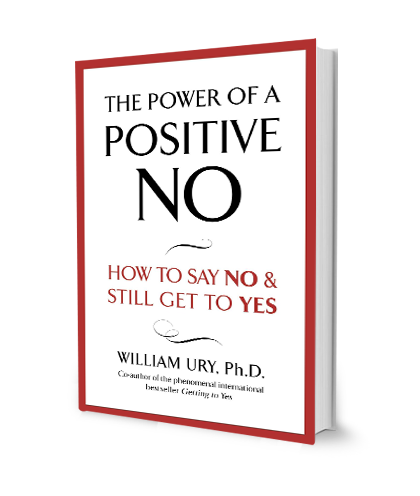5 KEY INSIGHTS FROM THE POWER OF A POSITIVE NO
“A ‘No’ uttered from deepest conviction is better and greater than a ‘Yes’ uttered to please, or what is worse, to avoid trouble.” - Mahatma Gandhi
William Ury’s book, The Power of a Positive No: How to Say No and Still Get to Yes, was published in 2007 but still has great relevance today. For those of you who may not be familiar with the author, he is a co-founder of the Harvard Program on Negotiation and one of the world’s leading experts on negotiation and mediation.
5 KEY INSIGHTS
While the book has many great takeaways, here are my top five key insights:
The 3A Trap - Instead of saying no, you may find that you fall into the trap of:
accommodating (saying yes when you really want to say no),
attacking (saying no without concern for your relationship),
avoiding (saying nothing at all so we don’t have to say no.)
These approaches may seem separate but very often, one spill over into the other.
The Yes! No. Yes? model.
The first emphatic Yes! expresses that you have an interest.
The definitive No. asserts your power and creates boundaries.
The second Yes? furthers your relationship by presenting a possibility that is consistent with your needs and values.
Saying No is essential to creation, preservation, and transformation. The gifts associated with learning how to say no skillfully are that you can:
create what you want,
protect what you value, and
change what doesn’t work.
Be honest and straight. It is important to be hard on problems, not people. If you accompany candor with empathy and respect, it enables you to disagree without being disagreeable.
Ask for what you want. Your Yes? is a proposal that should have four characteristics. It needs to be:
clear
feasible
positively framed
respectful
As Ury writes, the Positive No is a marriage of two of the most fundamental words in the language: Yes and No.
Yes is the key word of community; No the key word of individuality
Yes is the key word of connection; No the key word of protection
Yes is the key word of peace; No the keyword of justice
The main insight of this book is that the secret to a successful negotiation is to learn the art of integrating both yes and no. This is what you need to create valuable agreements while also building and preserving precious relationships.
If you’ve read this book and have additional insights, I’d love to hear them!


